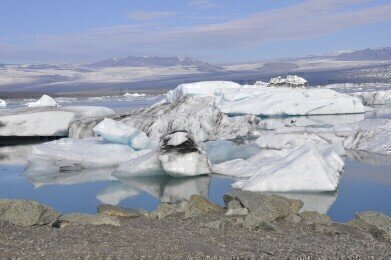Air Monitoring
Air Monitoring - Do Carbon Reservoirs Reach the Atmosphere?
Mar 19 2020
Over millennia, carbon has built up in our environment and been stored in reservoirs deep underground or at the bottom of the ocean. These deposits are normally found in the permafrost prevalent across Alaska, northern Canada and Siberia, or else in methane hydrates in ocean sediments along the coastlines of continents.
As the world continues to heat up due to global warming, it’s feared that these reservoirs will become disturbed, releasing the carbon stored within and potentially emitting it into the atmosphere in the form of CO2 or methane. This could have disastrous consequences, since it would effectively accelerate the same process which caused it, thus entering into a exponentially damaging spiral.
Keen to understand more about how this phenomenon would affect atmospheric methane concentrations in the long run, a team of researchers from the University of Rochester in New York studied samples gathered from the Taylor Glacier in Antarctica. Their findings revealed that it’s unlikely that much of the released carbon would reach the atmosphere as methane, thus suggesting that anthropogenic emissions are far more of a concern.
What are carbon reservoirs?
Carbon reservoirs are primarily found in two locations: permafrost in the northern hemisphere, or methane hydrates deep under the ocean’s surface. The former is created when plants die and decompose, thus releasing carbon. However, the freezing conditions all around the matter traps that carbon into the ice, along with an abundance of water. When temperatures rise (due to global warming, for example), the permafrost thaws and the carbon is released – but so too is the water. This reduces the amount of oxygen in the vicinity, creating the perfect habitat for microbes living in the soil to consume the carbon and emit it back into the atmosphere as methane.
Meanwhile, methane hydrates are formed when molecules of methane become trapped inside so-called “cages” of water molecules along continental coastlines. Since they can only be formed in conditions with low temperatures but high pressures, they most commonly occur many hundreds of metres beneath sea level. Global warming affects the ocean as well as the air, meaning that if the sediments containing the methane hydrates heat up, the latter can destabilise and release the methane into the air.
How serious a problem are they?
In order to ascertain whether the release of carbon reservoirs would have as catastrophic consequences as some commentators have speculated, the University of Rochester team drilled into ice cores from Antarctica and studied the chemical composition of the millennia-old air bubbles trapped inside. The last time the Earth underwent a deglaciation period was between 8,000 and 15,000 years ago – which occurred naturally, unlike the present crisis – so that timeframe formed the target area of the team’s research.
The results of their study showed that permafrost methane emissions are normally oxidised by bacteria which consume them, or else never convert into methane and remain as CO2. With regard to methane hydrates, the majority of methane released is also oxidised by ocean microbes before it has a chance to reach the surface of the waves. Therefore, the team concluded, it’s more important to concentrate on achieving greenhouse gas emissions targets by targeting anthropogenic activity than it is to worry about naturally occurring emissions.
Digital Edition
AET 28.3 September 2024
September 2024
Business News - ENVEA announces acquisition of APAQ Group - SICK and Endress+Hauser sign strategic partnership - Efforts to curb gas flaring intensify amid environmental concerns Air Monito...
View all digital editions
Events
Meteorological Technology World Expo 2024
Sep 24 2024 Vienna, Austria
Water Africa and East Africa Building & Construction
Sep 24 2024 Kigali, Rwanda
Elmia Water and Wastewater Fair - POSTPONED
Sep 24 2024 Jonkoping, Sweden
Sep 25 2024 Vientiane, Laos
Sep 25 2024 Almaty, Kazakhstan



















